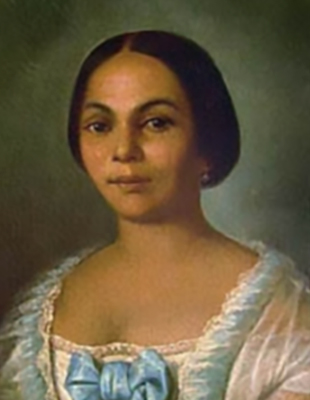Claude Thomas Pierre Metoyer (1743-1815), son of Nicolas Francois Metoyer (1715-1776) and Marie Anne Drapron (1714-1748) was born on March 12,1744 in La Rochell (St. Barthelemy) Charente-Maritime, France.
In the mid 1760’s he immigrated from France to the outpost of Natchitoches in the Louisiana Territory where he became a successful merchant and plantation owner. He later had a liaison with an African slave, Marie Therese dite Coincoin, by whom he fathered ten children. Marie Therese and her children became free men and women of color (gens de couleur libre), eventually owning 12,000 acres of farm land which would become Melrose Plantation.
Marie and her family (former slaves) would own 200 slaves to become one of the wealthest families of free men of color in the United States. Claude served as marechal de logis (quartermaster) in the 1780 company that Governor Bernardo de Galvez dispatched to Mobile amid the American Revolution from 1772-1791.
In 1788 he married Marie Therise Eugenie Buard widow of his good friend Etienne Pavie with whome he fathered three children. Their son Francois Benjamin Metoyer married Marianne Aurora Lambre and fathered Marie Louise Aimee Metoyer who married Charles Alexis Cloutier, my great grandmother and grandfather (see The Campti- McKnight Cloutier Connection).
Nicolas Augustin Metoyer
Nicolas Augustin Metoyer

The son of Frenchman Claude Thomas Pierre Metoyer and African slave Marie Therese Coincoin, Nicolas Augustin Metoyer was a French Creole and a leading personality of the community of free people of color known as Isle Brevelle. One of his most well-known and lasting contributions to the Cane River region was the building of St. Augustine Catholic Church, the first Roman Catholic Church built by and for people of color in the United States. Originally started as a mission church, St. Augustine would grow to be the focal point of creole culture and serve as the pillar on which the Cane River creole community still stands today.




